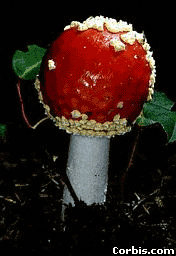
 Sarcodina &
Zoomastigina &
Euglenoids (red coralline, mermaids fan) &
Zygomycotes
Sarcodina &
Zoomastigina &
Euglenoids (red coralline, mermaids fan) &
Zygomycotes
Sarcodina
1. The largest phylum (11,500 living species and 33,000 fossil species) of protozoans). It comprises the amebas and related organisms; which are all solitary cells that move and capture food by means of pseudopods, flowing temporary extensions of the cell. Most sarcodines are free living; others are parasitic.
2. One of these parasites is the causative organism of amebic dysentery. With the exception of chloroplasts, sarcodines are identical to the ameboid members of the phylum Chrysophyta.
3. Sarcodines may reproduce asexually by cell division, often without breakdown of the nuclear envelope that is typical in mitosis, or sexually by meiosis and the production of haploid gametes, followed by fusion of gametes and the formation of zygotes.
4. The sarcodines include the naked forms (amebas) and forms with perforated shells, or tests, through which pseudopods may be extended. Best known of the shelled forms are the foraminiferans, with calcium carbonate shells.

Sarcodina
Zoomastigina
1. The phylum zoomastigina is made of protists know as flagellates, so named because they have one or more flagella. Different rates of growth from egg stage to adult depend on individual species; one queen per colony, which can lay tens of thousands of eggs in her lifetime, but most eggs are laid by supplementary reproductive in an established colony.
2. Flagellated protists move by whipping their flagella from side to side. Although some flagellate species are parasites that cause disease in animals, other is helpful. Termites can survive on a diet wood. Live in colonies underground, from which they build tunnels in search of food; able to reach food above the level of the ground by building mud tubes; dependent on moisture for survival. Without help of a certain species of flagellate, termites could not digest the cellulose in wood.
3. However, within the intestines of termites are flagellates that can ingest cellulose. In a mutualistic convert cellulose into a carbohydrate that both they and their termite hosts can use.
4. The flagellated protozoan that live in the guts of termites possess enzymes that digest wood, making nutrients available to their hosts.

Zoomastigina
Euglenoids (red coralline, mermaids fan)
1. Hundreds of species of euglenoids make up the phylum Euglenophyta. Euglenoids are unicellular, aquatic protists that have traits of both plans and animals.
2. Although they lack a cellulose cell wall as in plant cells, euglenoids have a flexible pellicle made of protein strips inside the cell membrane. Euglenoids are like plants in that most contain chlorophyll and carry out photosynthesis.
3. They are also like animals because they are responsive and move some very actively by using one or two flagella for locomotion.
4. When light is not available for photosynthesis, Euglena can ingest food from the surrounding water the same way that many protozoans do; in short, they can be heterotrophs.

Euglenoids
Zygomycotes
1. Zygomycotes reproduce asexually by producing spores, and sexually by forming thick- walled spores. Hyphens of zygomycotes do no have septa.
2. Fungi in the division Zygomycota live in decaying organic matter. These divisions of fungi produce zygosporangia, which are resistant bodies that can stay dormant through harsh conditions. One of the most common types of zygomycotes is black bread mold.
3. Zygomycota (zy-go-my-COE-ta) means "paired" or "yoked" fungi because, when two different hyphae join together for sexual reproduction, they form a swollen, thick-walled structure (zygospore) that links the hyphae together
4. Fertilization takes place inside the zygospore when nuclei from the two hyphae fuse together. According to Margulis and Schwartz (1988), zygomycote sex is something like an orgy because so many nuclei are brought together and fuse at the same time.

Zygomycotes
 MAIN PAGE
MAIN PAGE
TOP






 MAIN PAGE
MAIN PAGE